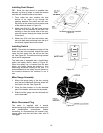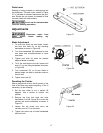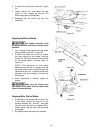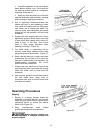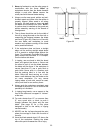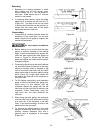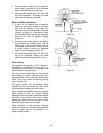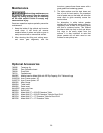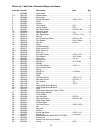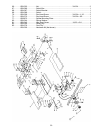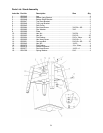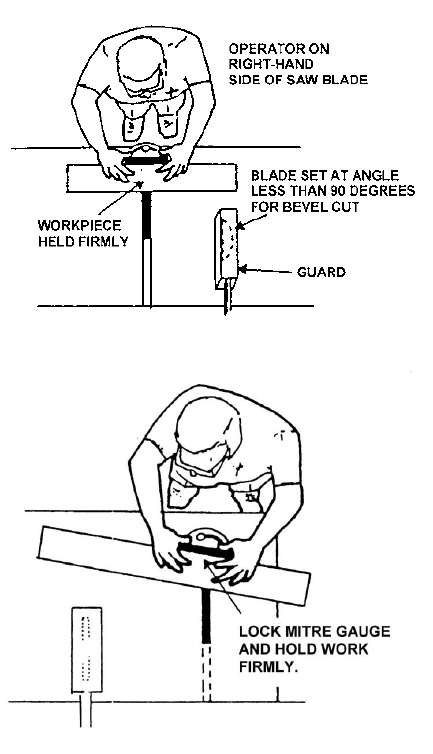
24
7. Provide auxiliary support for any workpiece
which tends to sag and lift up off the table
when it extends beyond the table top.
8. Have the blade extend about 1/8" above the
top of the workpiece. Exposing the blade
above this point can be hazardous.
Bevel and Miter Operations
1. A bevel cut is a special type of operation
where the saw blade is tilted at an angle
less than 90 degrees to the table top.
Operations are to be performed in the same
manner as ripping or crosscutting. When
beveling with the miter gauge, the workpiece
must be held firmly to prevent creeping
(Figure 44).
2. Crosscuts made at an angle to the edge of
the workpiece are called miters. Set the
miter gauge at the required angle, lock the
miter gauge, and make the cut the same as
a normal crosscut, holding the workpiece
tightly to prevent creeping (Figure 45).
3. Have the blade extend about 1/8" above the
top of the workpiece. Raising the blade
above this point increases the risk of injury.
Dado Cutting
The process of cutting 1/8" to 13/16" grooves in
workpieces is accomplished by the use of a
stacked dado blade set or an adjustable type
blade mounted on the saw arbor.
By using various combinations of the stacked
dado blades, or properly setting the dial on an
adjustable blade, an accurate width dado can be
made. This is very useful for shelving, making
joints, tenoning, etc.
The guard, splitter and anti-kickback pawls
supplied with the saw should be used for all
cutting operations where they can be used.
When completing operations where the supplied
guard cannot be used, as in some dadoing
operations, alternative safety precautions should
be taken. These include: push sticks, feather
boards, filler pieces, fixtures, jigs and any other
appropriate device that can be used to keep
operators’ hands away from the blade.
Upon completion of the operation requiring
removal of the guard, the entire guard assembly
must be placed back on the machine in its
proper working position.
Figure 44
Figure 45



